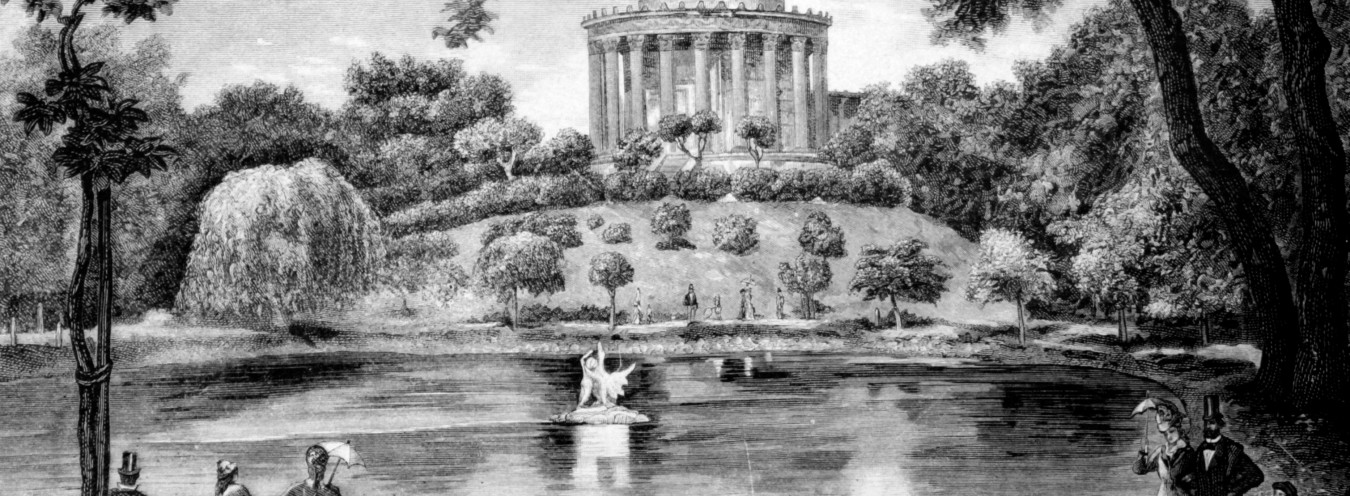
Saski Garden
Wokulski called at the shop for a moment only, could not eat his lunch, then went to Saski park. (185)
Founded in the 17th century by the Saxons, Saski Garden is the oldest Warsaw park open to the public. At the time that the plot of The Doll takes place, the park was being extended and a number of attractions were added: a stylised temple, statues, gazebos, a pond, a fountain, a shooting range, and a playground. It also housed a Summer Theatre, built in 1870. In 1876, Kubicki’s riding school was turned into the exchange, which is mentioned in the novel.
Located in the city centre, the park was easily accessible thanks to its seven gates. In the 1869 Tygodnik Ilustrowany, Franciszek Sobieszczański states that Between 9 am and 1 pm, Saski Garden becomes prey to children, governesses, duennas, and nursemaids of different classes and languages. Passers-by have to step aside to give way to prams, little children on bikes, balls and circles flying in all directions. In the afternoon, the garden became a catwalk; the terrace of its Lessel’s café was a perfect place to watch the strolling people. In the evening, Varsovians came there after work hours. All had to leave, however, at the call of the guards, who signalled with rattles that it was closing time.
Fritz Wernick, a widely educated German journalist and traveller, wrote, Among all the parks, Saski Garden is the most attractive. Few European cities can take pride in such beautifully located extensive green area in the very centre. […] In the hot season, the garden is an inexhaustible source of entertainment and health, an oasis of open air and greenery, the most popular walking promenade among the inhabitants of Warsaw.
Saski Garden is too crowded to become a meeting place for the characters in The Doll, yet it could not have gone unmentioned in a realist novel about late-nineteenth-century Warsaw. It is referred to when Wokulski, strolling in the Garden, thinks about the newly acquired mare entered for a race – and about Izabela Łęcka.
Bibliografia
- Fritza Wernicka opis Warszawy z 1876 roku, ed. and trans. I. and J. Kosim, in Warszawa XIX wieku (1795-1918), vol. 1 and 2, Warsaw 1970.
- E. Charazińska, Ogród Saski, Warsaw 1979.
- M. Kledzik, W cieniu Ogrodu Saskiego, Warsaw 2000.


